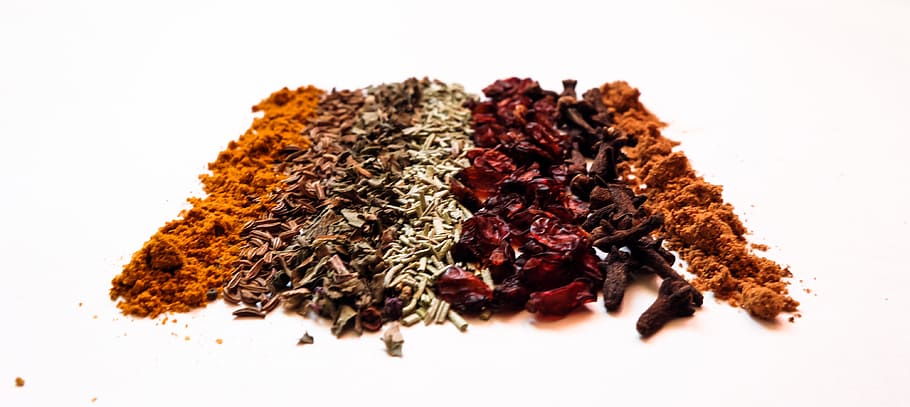Nutmeg, a common kitchen spice, hides a complex history and a plethora of uses that stretch far beyond culinary delight. Our journey with nutmeg begins in the lush, tropical climates where the Myristica fragrans tree, the sole producer of both nutmeg and mace, thrives. These spices, known for their warm, aromatic qualities, have traveled through time, not just as culinary ingredients but as significant medicinal agents. The use of nutmeg as a psychotropic substance, however, casts a shadow of intrigue over its otherwise mundane presence in kitchen cabinets around the world.

Nutmeg: A Spice with Multiple Faces
Andrew T. WEIL, during his time at Harvard Medical School, delved into the multifaceted nature of nutmeg, illustrating not only its historical and commercial relevance but also its place within the realm of narcotics. His insights, rooted in a thorough exploration of nutmeg’s journey from the Spice Islands to modern-day households, reveal a story that intertwines culture, commerce, and curiosity in the quest for altered states of consciousness.
The botanical origins of nutmeg trace back to the Spice Islands, or the Moluccas, where the nutmeg tree found its perfect habitat. Cultivated widely across the tropics, including the Caribbean and around the Strait of Malacca, nutmeg, alongside mace, emerged as a prized commodity. The commercial appeal of nutmeg, particularly the variety yielded by Penang, earned its place in global trade, influencing cuisines and medical practices far and wide.
Nutmeg, the dried seed of the Myristica fragrans, and mace, its aril, are not just culinary delights. Their uses span the spectrum from being preserved in sugar, salted and dried as condiments, or transformed into flavorful jellies. Ground nutmeg, with its characteristic aroma and slightly bitter taste, has seasoned a variety of dishes, from custards to pies and certain vegetables. Mace, sharing a similar yet distinct profile, has found its way into pickles, sauces, and even chocolate dishes.
Beyond their culinary applications, both nutmeg and mace were once revered in medicine. Historical records, like those cited by Warburg, showcase nutmeg’s role in Arabian, Indian, and even Western medicine. From its purported effects on the digestive system to its use as an aphrodisiac and tonic, nutmeg’s medicinal journey is as rich as its flavor. In Indian medicine, references in the Vedas spotlight nutmeg as a warmth-producing and stimulating spice, vital for digestion and various remedies. This reverence was mirrored in Western medicine, where nutmeg, branded as a warm, dry drug, was enlisted to combat a multitude of maladies.
The Twofold Nature of Nutmeg: Culinary Delight and Narcotic Possibility
The turning point in nutmeg’s history lies in its gradual emergence as a narcotic. The pleasant mental alterations it induces, albeit with alarming symptoms at times, underscore the human propensity to seek escape through the experimentation of intoxicants. Nutmeg’s narcotic properties, highlighted by cases of nutmeg poisoning and its use as an emmenagogue and abortifacient, expose a darker, more cautionary tale. Despite these risks, the spice’s intoxicating effects have continued to allure those in pursuit of euphoria, navigating the fine line between culinary spice and psychotropic substance.
Nutmeg’s psychotropic effects are primarily attributed to myristicin, a compound found in both nutmeg and mace, the spice’s aromatic counterparts. Myristicin, alongside other compounds such as eugenol, isoeugenol, and safrol, contributes to the spice’s narcotic properties. The journey from ingestion to intoxication is complex, resulting from the body’s metabolization of myristicin, transforming it into substances that affect the central nervous system. This transformation elucidates why nutmeg, in substantial quantities, can induce experiences ranging from mild euphoria to severe hallucinations and delirium.
Understanding the pharmacology of nutmeg requires delving into its chemical complexities and the body’s response to these compounds. The psychopharmacological effects of nutmeg have been a subject of curiosity and concern, given the spice’s dual identity as a culinary ingredient and a narcotic substance. The symptoms of nutmeg intoxication include confusion, palpitations, nausea, dehydration, and generalized body pain, which can persist for several hours, marking a stark contrast to its culinary uses.
The historical context of nutmeg’s medicinal and narcotic use sheds light on its enduring allure. From its role in Arabian, Indian, and Western medicine to its darker reputation for causing poisoning and hallucinations, nutmeg’s journey is rich with cultural and historical significance. Its transition from a medicinal agent to a narcotic underscores the evolving perceptions of psychoactive substances and their place in society.

Cases of nutmeg poisoning, particularly those documented in the 19th and early 20th centuries, highlight the risks associated with its misuse. While some sought nutmeg for its abortifacient properties, others experienced unintended intoxication, underscoring the dangers of its narcotic effects. The variability in reactions to nutmeg, influenced by dosage, individual physiology, and psychological factors, complicates attempts to fully understand its impact on human health.
The legality of nutmeg as an unregulated substance raises important questions about the criteria for controlling psychoactive substances. Its availability in grocery stores, juxtaposed with its potential for abuse, presents a unique dilemma. The absence of widespread abuse likely stems from the unpleasant side effects that accompany its euphoric highs, deterring casual experimentation. However, the continued interest in nutmeg’s psychotropic effects underscores the human inclination towards altered states of consciousness, regardless of the source.
Nutmeg’s dual nature as a cherished spice and a mind-altering substance showcases the intricate connection between humans and the environment. While its culinary uses bring warmth and flavor to our dishes, its narcotic properties invite caution and respect. As we navigate the intricacies of nutmeg’s influence, we are reminded of the fine line between pleasure and peril, a balance that has intrigued and challenged humanity throughout the ages.
Related posts:
Nutmeg Treated as Drug for Hallucinogenic High
Kids are sniffing this pantry staple to get high — right under their parents’ noses
High on Nutmeg: The Effects of Too Much and the Dangers





